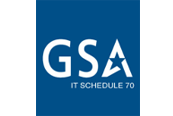At WhirlWind one of our core values is Innovation: To think and act differently in a useful way. During our 4th Quarter meeting, we participated in group activities, applying innovative solutions to hypothetical (yet practical) issues at work. In our group, the issue we looked at was “recruiting”. Even as we examined possible solutions, we realized no matter how well intentioned we were, most of the solutions we suggested were still within the box.
The exercise was meant to prime us for the Ted-talk style presentation on Innovation delivered by our globe-trotting CEO. KoJo recently attended the Growth Forum hosted by the Entrepreneur Organization (EO) at the London School of Business (LBS) and was buzzing with excitement and ideas.
One of the sessions at the Growth Forum was facilitated by Amnon Levav, the Co-Founder and Managing Director of Systematic Inventive Thinking (SIT). Levav has developed a highly structured approach to “Inside-the-box” idea creation.
“Inside-the-box” is not the first thing that comes to mind when we think of innovation, which underscores Levav’s first mantra: Do not “do” innovation, do what you do in an innovative way. Our innovation sweet spot, he says, lies far enough from our existing service to attract real interest, but close enough to fall within our company’s existing position and capabilities.
According to Levav, what he terms “Structural Fixedness” (or mental roadblocks) prevent most of us from thinking innovatively. Structural Fixedness makes it hard to see the possibilities, and we end up being stuck in a rote fixed sequence, one step after another.
Levav’s idea on breaking through Structural Fixedness is to:
- Start with the product or service, rather than a customer’s unmet needs
- Focus on its characteristics, environment and attributes (color, type of use, location etc.)
A brilliant example to illustrate the above steps is the development in the transportation arena from Taxis to the now ubiquitous Uber.
The key to breaking out of Structural Fixedness is to follow Systematic Innovation Patterns rather than Preconception. Levav outlines-
Five Patterns/Templates of Innovation:
- Subtraction/Reduction: Avoid “feature creep” and simplify rather than add features (e.g. the difference between an old DVD player full of buttons and new sleek one)
- Multiplication: Add copies of a feature but alter them in a significant qualitative way (e.g. doubling the trash bins to allow people to separate their recycled trash from regular trash)
- Division: Breaking down a product to its parts, allows us to see it in a different light and to reconfigure it in unexpected ways (e.g. the gradual evolution of the old hi-fi, with its speakers and turntables into one cabinet)
- Task Unification: Assign a new task to an existing element (e.g. integrating the antenna into the back windshield of a car)
- Attribute Dependency Change: Create or modify dependencies of a product to its environment (e.g. lenses for glasses that darken in the sun, eliminating the need for switching glasses)
KoJo wrapped up the talk by illustrating how some combination of the patterns were used to transform a regular business card into a more inventive version. He left us with one last reminder: Function follows form.
So don’t be alarmed if what emerges initially seems bizarre. Only after visualizing the revamped version of a product can you assess its likely success in the marketplace and viability of producing it. And remember, the fact that we are starting with an existing product or service reduces the chance that we will come up with impractical ideas that we are unable to produce or market.
What are your thoughts on innovation? Have you applied Innovative thinking to your work? What are your strategies for escaping your own mental roadblocks? Please comment and join in this important conversation.







